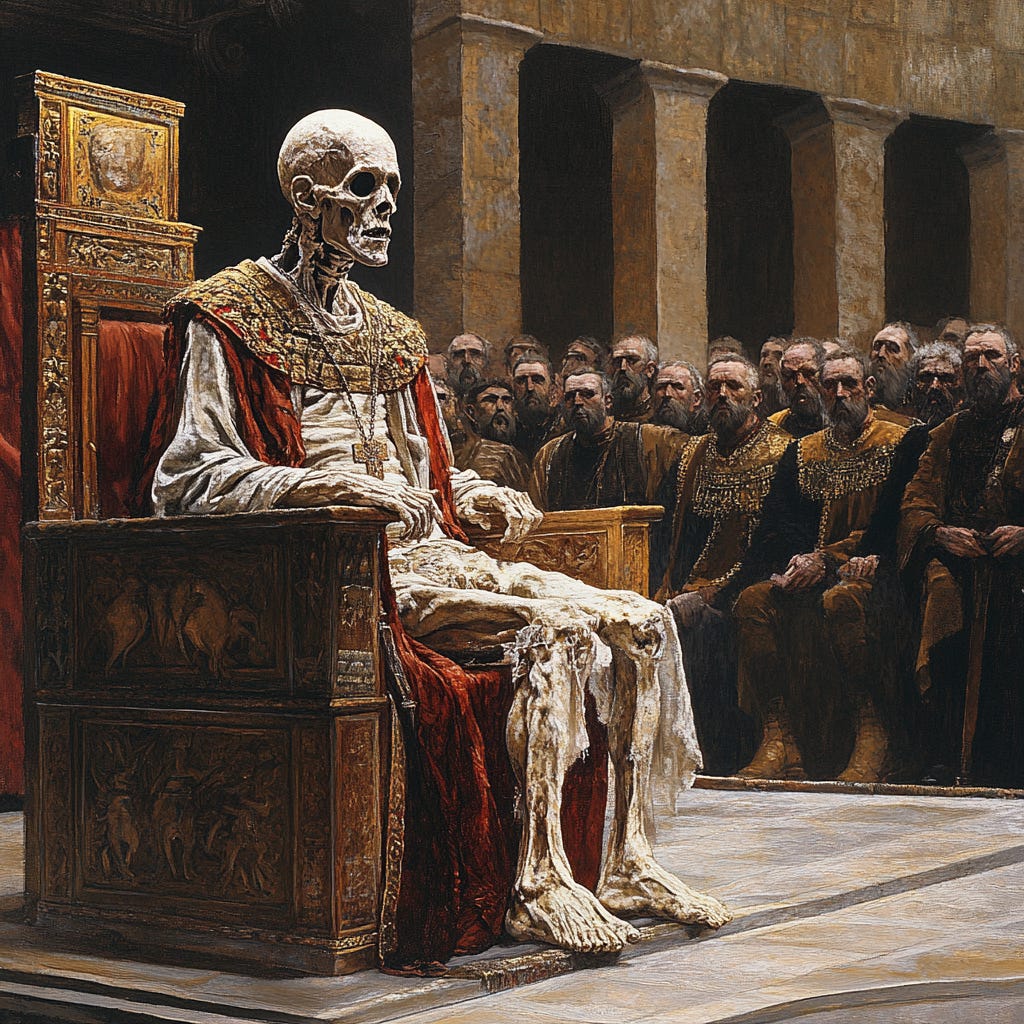The Cadaver Synod: The Unhinged Spectacle of Medieval Cancel Culture
What a 9th-century papal necro-trial reveals about our own collective psychosis
Rome, 897 AD. The stench of putrefaction permeates St. John Lateran as Pope Stephen VI, wild-eyed with righteous indignation—or perhaps just plain old psychosis—presides over what might be history's most deranged trial. The corpse of his predecessor, Pope Formosus, was exhumed from its grave and now sits propped on a throne, in court, dressed in papal regalia, while a living deacon is crouched behind the corpse, to ventriloquize the corpse’s responses to the prosecutor’s increasingly unhinged accusations, like some sort of macabre puppet.
This incident, known as the Cadaver Synod—literally putting a decomposing corpse on trial — was a spectacle so grotesque that even the semi-barbaric medieval mob eventually said, "okay, this might be a bit much." If you're looking for the original cancel culture, forget Twitter—this is cancel culture's Paleolithic ancestor, raw and unfiltered by even the most basic pretense of proportionality or sanity.
Before we had "I dug up a tweet I don’t like and therefore think we should de-platform this person", we had "I'm going to dig up his literal rotting corpse and put it on trial."
What was Pope Formosus's great crime, you ask?
He was accused of coveting the papacy, of political alliance with the wrong faction, and of having the audacity to remain politically relevant in death. The charges were as banal as the punishment was extraordinary.
After declaring the corpse guilty (in what was surely history's most one-sided debate), Stephen had three fingers chopped off the corpse’s blessing hand, stripped it of papal vestments, and invalidated all of Formosus's papal acts.
The body was initially tossed into a pauper's grave, then later dug up AGAIN and thrown into the Tiber River. One imagines Stephen VI doom-scrolling the Tiber's current, making sure his enemy's corpse was being properly carried away by the current (plot twist, the poor corpse didn’t get far, more on that in a sec).
But why did all this happen? And how did the public react? And how will this predict what happens next in our modern version of cancel culture?
Well, for starters, this wasn't happening in some backwater of civilization but at the very center of Western Christendom during what historians cheerfully call the "Pornocracy" or "Rule of the Harlots"—a delightful epoch of papal history.
Historical context here matters: The term for that era—from Greek "porne" (prostitute) and "kratia" (rule)—refers to
Keep reading with a 7-day free trial
Subscribe to THE HEGELIAN DISPATCH to keep reading this post and get 7 days of free access to the full post archives.




